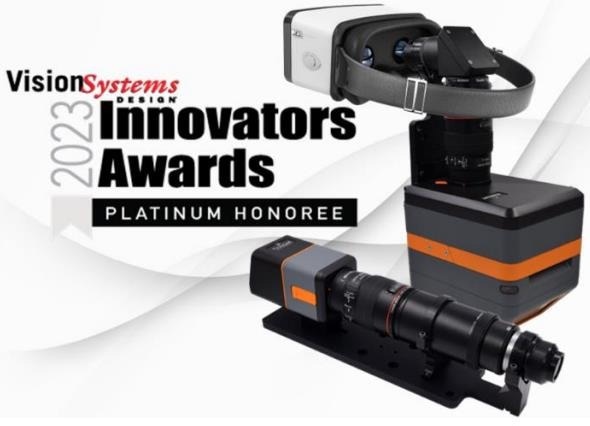Radiant Vision Systems, a leading provider of imaging systems for scientific evaluation of light sources and displays, announces today that its XRE Lens was recognized among the best in vision technology by the 2023 Vision System Design Innovators Awards. The judging panel consisted of esteemed experts from system integrator and end-user companies.

Image Credit: Radiant Vision Systems
“The Vision Systems Design team would like to congratulate Radiant for their score, which earned a platinum designation in the 2023 Innovators Award program,” says Linda Wilson, Editor in Chief. “Each year the unbiased and increasingly competitive program aims to celebrate the most innovative products and systems in machine vision. The Radiant team should be very proud.”
Radiant’s XRE Lens is a unique solution for near-eye display testing of extended reality (XR) headsets and smart glasses. Utilizing patent-pending technology that features electronic focus and configuration options, the XRE Lens offers flexibility for evaluating visual elements as they are seen through the headset, simplifying the task of deploying measurement for a diverse array of AR, VR, and MR devices. The lens pairs with high-resolution ProMetric® imaging colorimeters and photometers and TT-ARVR™ Software to provide a complete automated visual inspection solution for XR display testing in R&D and production.
“The diversity of XR devices and their measurement requirements continue to expand,” states Eric Eisenberg, Optics Development Manager at Radiant. “New display types, FOVs, resolutions, focal distances, form factors, and unique combinations of these elements can’t be addressed universally with a single optical solution. Many manufacturers opt for custom measurement/optical solutions, which carry a significant time and cost burden, and which are not easy to deploy.”
“Radiant is honored by this recognition of our continuing innovation in the arena of display metrology,” said Doug Kreysar, CEO of Radiant Vision Systems. For more than 30 years, we have focused on developing the most advanced photometric and colorimetric imaging systems and accessories to help device makers ensure the quality of their products. The XRE lens is the latest in our long line of specialized optical measurement systems.”
The XRE Lens offers several specification options and flexible features that now enable device makers to address the diversity in XR optical designs and reduce the need for costly custom measurement equipment design cycles. The XRE Lens is the first imaging metrology solution to offer electronic focus for in-headset XR display testing. Electronic focus allows precise focal distances to be set and adjusted remotely via software and enables automated focus changes as part of fully automated visual inspection routines, optimizing testing efficiency and supporting advanced analysis.
“Electronic focus is a huge advantage for XR testing,” states Eisenberg. “Analyses like through-focus MTF [modulation transfer function] are simply impossible with traditional manual lenses. This analysis requires the system to iterate through a series of focus distances to find best focus for multiple regions across a display. A complete analysis could require thirty or more focus adjustments. Using a manual lens, these settings are imprecise and time-consuming—potentially taking hours for a complete analysis with little confidence is the accuracy of the result. With electronic focus, a through-focus MTF analysis can be fully automated to provide results in a matter of seconds.”
The XRE Lens is available in two configurations—folded or non-folded. This flexibility enables manufacturers to position the lens where the human eye would be within headgear and also supports dual-eye (stereoscopic) measurement, where two XRE Lens systems are positioned inside the headset at once to capture simultaneous measurements of left- and right-eye positions. The XRE Lens pairs with either the ProMetric Y Imaging Photometer for luminance-only measurement or the ProMetric I Imaging Colorimeter for measuring values of luminance and chromaticity. Manufacturers can choose from 29-, 45-, and 61-megapixel resolution options to maximize imaging precision over the solution’s ±35° (70° total) field of view.